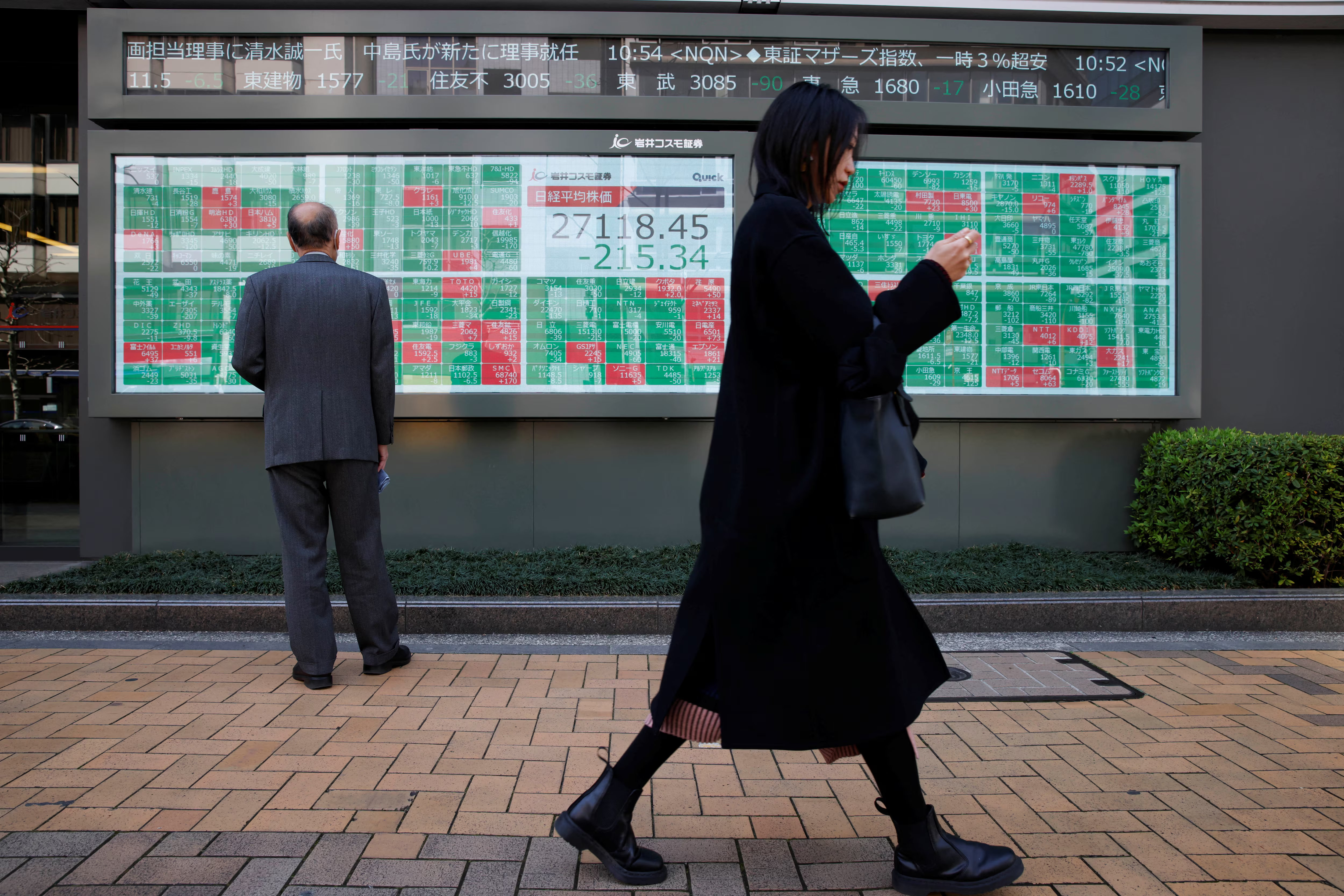Asian Markets Slide Amid Weak Chinese Economic Data, Rising U.S. Bond Yields, and Strengthening Dollar
On Thursday, Asian shares trended lower, weighed down by a faltering Chinese market, while U.S. bond yields and the dollar rose as investors considered the latest inflation figures and implications for future monetary policy.
With the world’s largest economy in focus, concerns over potential inflationary pressures are stirring as newly re-elected Donald Trump’s policy stance signals a mix of tax cuts and heightened tariffs.
The MSCI Asia-Pacific index fell 0.3%, erasing gains from earlier in the session as Chinese stocks struggled for traction despite Beijing’s recent attempts to revive the economy. Mainland China’s CSI300 blue-chip index dropped 0.16%, while the Shanghai Composite Index slipped by 0.24%, and Hong Kong’s Hang Seng Index lost 0.34%.
Chinese stocks have faced ongoing challenges as the nation grapples with a protracted property market downturn. Although Beijing unveiled new tax incentives on home and land transactions on Wednesday, analysts remain skeptical about their impact.
“If you’re considering buying a house or in the market for one, it helps, certainly. But it’s not going to change the situation itself,” noted Alvin Tan, head of Asia FX strategy at RBC Capital Markets. “The inventory overhang is still there, and it’s unlikely to galvanize mass home-buying.”

In Japan, the Nikkei Index also followed the regional trend, slipping 0.14% by the afternoon despite earlier gains. Investors in Asia are cautiously monitoring developments in both the U.S. and Chinese economies, especially as American policy shifts could create ripple effects across global markets.
READ ALSO: Anthony Gordon Speaks on Withdrawing from England Squad
Bitcoin has recently surged past the $90,000 mark, driven by optimism around Donald Trump’s return to the White House and growing views that his administration might support cryptocurrency markets. On Wednesday, the cryptocurrency was trading at $90,151, up 1.7% and experiencing a significant two-week rally of more than 30%.
Many crypto enthusiasts and investors believe that Trump’s administration could adopt favorable policies for digital assets, giving Bitcoin and other cryptocurrencies a potential tailwind in the coming years.
Back in the U.S., market reactions to the recent inflation report, which aligned with expectations, are intensifying discussions about the Federal Reserve’s next move. Traders have increasingly bet on a 25-basis-point rate cut at the Fed’s December meeting, with odds climbing from 59% to 83% over the past day.
However, the outlook beyond 2025 has become murkier with Trump’s planned economic agenda, which includes lowering taxes and raising tariffs — factors that could heighten inflation pressures and limit the Fed’s flexibility to cut rates.
Boris Kovacevic, a global macro strategist at Convera, commented on the potential for changes to the Fed’s policy approach: “Speculations about what Trump might do on the domestic policy and trade front are unlikely to be featured in the Fed’s December projections.
This will change as the first policies are rolled out.” Kovacevic also noted that the full effects of Trump’s proposed tariffs and tax cuts may not be felt until after 2025, offering the Fed a window to adjust its response.
As uncertainty looms, the impact is being felt across the yield curve. The benchmark 10-year Treasury yield hit a peak of 4.483% in Asia trading on Thursday, its highest since early July, while the 30-year yield also rose, trading at 4.6624%. However, on the shorter end of the curve, the two-year yield, which closely reflects near-term interest rate expectations, eased slightly to 4.3088%.

Despite the rising bets on a December rate cut — which would typically weigh on the dollar — the greenback remained strong on Thursday, buoyed by the higher long-term yields.
The dollar index rose 0.24% against the Japanese yen, reaching 155.86, while the euro weakened to a one-year low of $1.0551. The Australian dollar saw a modest 0.03% uptick to $0.6487, recovering slightly from a brief dip following a weaker-than-expected employment report.
READ ALSO: N1.3 Trillion Fraud: EFCC Seizes Okowa’s Passport, Releases Him on Bail Pending Investigation
Commodity markets saw declines on Thursday as well. Brent crude oil prices dipped by 0.18%, reaching $72.15 per barrel, while West Texas Intermediate (WTI) crude dropped 0.28% to $68.24 per barrel. Meanwhile, spot gold fell by 0.42%, trading at $2,562.25 an ounce, as investors moved toward the dollar and long-term U.S. bonds as safe-haven assets amidst market uncertainty.
The global market environment is navigating a mix of factors: a weak economic outlook for China, the rising influence of U.S. policies with Trump’s return, and continued focus on inflation management by the Fed. With an uncertain path ahead, especially in light of political and economic shifts, investors are balancing opportunities and risks as they watch for signs of stability or further volatility.
Discover more from Cine critique
Subscribe to get the latest posts sent to your email.

